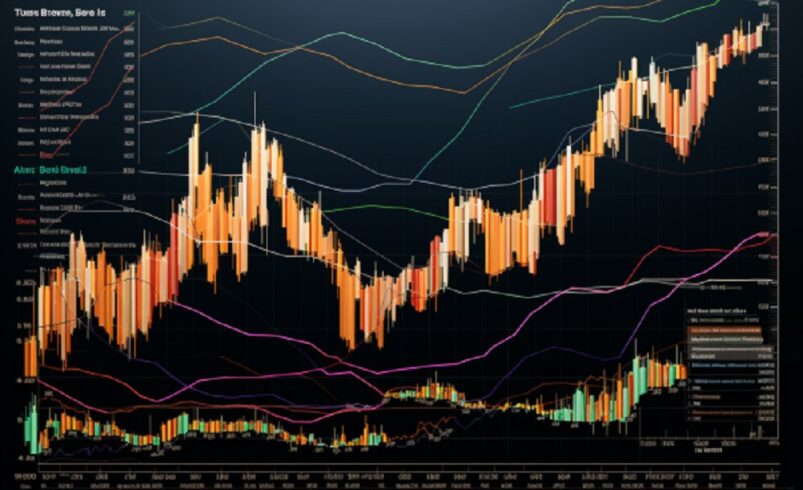A Simple Guide To Understanding Cross & Isolated Margin Trading Strategies

In cryptocurrency, margin trading offers amplified gains but with increased risk. However, margin trading can either be cross or isolated.
This guide explores these strategies, their mechanisms, benefits, and risks. It also offers insights into navigating this dynamic landscape effectively.
Cross Margin Trading In Crypto
Cross-margin trading employs the entire account balance as collateral for positions in cryptocurrency trading, exposing the entire account value to potential trading losses. Although it facilitates higher leverage and the capacity to open larger positions with less initial capital, it is accompanied by heightened risk.
Notably, cross-margin trading offers a buffer with the entire account balance, shielding against individual position liquidation. However, cross-margining entails increased risk as the entire account balance is susceptible to losses. Hence, prudent risk management is imperative for traders employing this strategy.
Monitoring and Stop-Loss Orders: Implementing stop-loss orders is an effective measure to curtail potential losses. These orders automatically trigger a sale on reaching a predefined price level, mitigating further losses.
Suitability for Experienced Traders: Cross-margining is a potent tool for seasoned traders who have experience in risk management. These individuals possess an in-depth comprehension of the market and are at ease with the associated risks.
Conversely, beginners and those with limited trading experience should approach cross-margining cautiously, ensuring a comprehensive grasp of the platform’s margin policies.
Scenario Analysis Mark’s Cross Margin Trade
Let’s explore a hypothetical scenario to improve our understanding of how cross-margin trading works. Consider Mark, a trader with $40,000 in his account who opts for cross-margining. He decides to go long on Bitcoin (BTC) at $80,000 per BTC and buys 4 BTC with 10x leverage, effectively controlling a 40 BTC position. Crucially, he uses the initial $40,000 as collateral.
Profitable Outcome: In the fortunate event that the price of Bitcoin rises to $90,000 per BTC, Mark’s 2 BTC are now worth $180,000. He seizes this opportunity and sells his BTC at a higher price. It results in $220,000 in his account ($40,000 initial balance plus $180,000 profit). This example illustrates the potential for substantial gains with cross-margining.
Managing Losses: However, had the price of Bitcoin dropped to $70,000 per BTC, Mark’s 2 BTC position would only be worth $140,000. Unfortunately, his account balance wouldn’t be sufficient in this scenario to cover the losses incurred from the price decline. Despite initially securing the position with $40,000 in collateral, he would face an unrealized loss of $60,000. This scenario underscores the importance of careful risk management.
Margin Call Considerations: In the event that losses exceed the available collateral, a margin call may be issued. This is a request from the exchange or broker for the trader to deposit additional funds to offset losses or reduce their position size. For Mark, this would be a critical moment that necessitates a strategic decision to either add more funds or potentially adjust his position.
Isolated Margin Trading In Crypto
Isolated margin trading is a targeted risk management strategy in the cryptocurrency realm. It mandates earmarking a specific collateral amount for each trade, fortifying both individual positions and the overall account balance against potential losses.
This method provides meticulous control over trade-related risk, with only the collateral designated for a specific position jeopardized if the trade turns unfavorable.
Precise Risk Management: Isolated margin trading offers the valuable ability to calibrate risk precisely. By allocating a defined collateral sum to each position, traders can shield other holdings and the overall balance from the impact of losses in a single trade. This control proves especially crucial in volatile markets.
Leverage With Customization: Isolated margin trading allows traders to customize each position despite utilizing leverage. This customization creates a more personalized approach to risk management, enabling adjustments based on the perceived risk associated with a particular trade.
Margin Call Policies: Traders employing isolated margins should acquaint themselves with the margin call policies implemented by specific exchanges. These policies may necessitate an increase in collateral or an adjustment of position size if losses breach a predefined threshold.
Scenario Analysis: Sarah’s Isolated Margin Trade
Let’s consider a hypothetical scenario involving Sarah. She opts for isolated margin trading and maintains a trading account with $30,000. She intends to trade Ether (ETH) and Bitcoin (BTC) separately, each with a distinct and isolated margin.
Collateral Allocation: Sarah strategically allocates $10,000 as a reserve in her account. She designates $15,000 as collateral for her BTC trade and $5,000 for her ETH trade. Thus, she effectively separates her BTC and ETH positions. Thus, there is the confinement of potential losses to the collateral assigned to each trade.
Loss Containment: If the price of Bitcoin falls while Sarah’s BTC position is open, her losses are limited to the $15,000 allocated as collateral for that trade. Since she has yet to utilize the $10,000 reserved for the ETH position, any losses in the BTC trade do not affect her other positions. It demonstrates the effectiveness of isolated margins in containing losses within specific trades.
Margin Call Absence: Even if the BTC position experiences losses more significant than the $15,000 in collateral, it won’t trigger a margin call. This is because isolated margin trading isolates the risk to the specific collateral allocation for each position. As a result, Sarah can actively manage risks without the immediate pressure of a margin call.
Best Practices And Considerations
For success in margin trading, consider these key practices:
Diversify Portfolios: Spread investments across assets to mitigate risk and avoid over-reliance on margin trading.
Platform Familiarity: Understand trading platform rules, including margin call procedures and specific requirements.
Continuous Monitoring: Regularly review positions, adjust stop-loss orders, and adapt to evolving market conditions.
Start Small: Especially for beginners, initiate with smaller positions to gain experience and confidence.
Robust Risk Management: Develop a clear plan, including entry/exit points, position sizes, and stop-loss levels.
Adhering to these practices empowers traders to navigate margin trading with informed decisions, balancing opportunities for gains with prudent risk management.
TradeZoneCrypto.com offers high-quality content catering to crypto enthusiasts. We’re dedicated to providing a platform for crypto companies to enhance their brand exposure. Please note that cryptocurrencies and digital tokens are highly volatile. It’s essential to conduct thorough research before making any investment decisions. Some of the posts on this website may be guest posts or paid posts not authored by our team, and their views do not necessarily represent the views of this website. TradeZoneCrypto.com is not responsible for the content, accuracy, quality, advertising, products, or any other content posted on the site.








